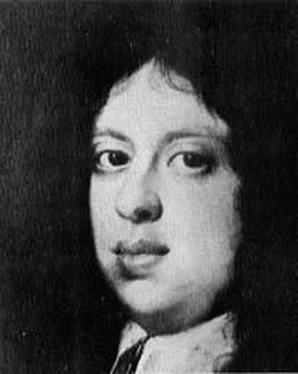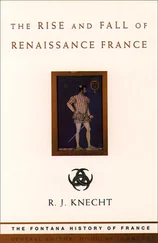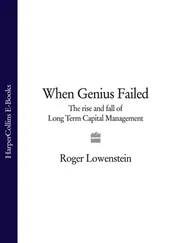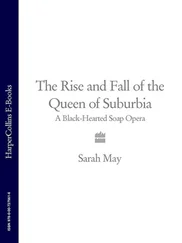Florence had other causes for sorrow. The city was a sad place now, poor, gloomy and disconsolate. Tourists reported it as being full of beggars, vagabonds and monks, passing in dreary procession beneath dark buildings with windows of torn oiled paper. A generation before, Gilbert Burnet, Bishop of Salisbury, lamented the pitiable condition into which it had fallen.’ Florence is much sunk from what it was,’ he wrote, ‘for they do not reckon there are above fifty thousand souls in it… As one goes over Tuscany, it appears so dispeopled that one cannot but wonder to find a country that hath been a scene of so much action now so forsaken and so poor.’ Subsequent travellers were similarly dismayed. ‘The declining state of this city is very visible,’ reported one of them,
a great deal of the ground within the walls being unbuilt, and many of the houses ill-inhabited, so that it is not very populous; nor are the inhabitants useful, the clergy making up the bulk of the people… I counted above four thousand monks and friars in one procession.
Despite the burdensome taxation imposed upon the people by Cosimo who had authorized a new form of income-tax on his deathbed, the State was almost bankrupt. So were many of the noble families whose ancestors had been so rich and so hospitable. Now guests were rarely invited to anything more exciting than a card party or a conversazione , at which nothing except lemonade, coffee or tea would be served with an occasional ice-cream – the nobles finding it difficult enough to pay for their own food, which was often brought in from some nearby cook-shop, let alone for the numerous servants who hung about their gateways in the hope of better times.
Better times could hardly be expected under Cosimo’s successor, Gian Gastone, who at fifty-two was not expected to overcome his indolence, his alcoholism or his taste for slovenly lubricity. He began his rule well enough, displaying a genuine concern for the welfare of the people and disdaining to spend money in the flamboyant manner of most of his relations. He reduced the intolerable level of taxation and lowered the price of corn; he discontinued public executions and provided the city’s beggars with a decent workhouse; he freed the government from the stranglehold of the Church which under Cosimo III had gripped it so tightly; he restored to scientists and scholars the freedom that had lately been denied them; and he rescinded the laws which had been passed against the Jews. But soon his constitutional sloth overcame him and he took to spending most of his time in bed; the crafty Giuliano Dami kept unwanted visitors at bay, and dealt with the craftsmen and antiquaries who relied on the Grand Duke’s lazy good nature to sell him objects that no discriminating collector would ever wish to possess.
Giuliano Dami also provided Gian Gastone with that motley troupe of young companions, male and female, but mostly rowdy boys, who were collectively known as Ruspanti after the coins – the ruspi – with which they were paid for their services. These Ruspanti , often handsome youths from the poorest Florentine families, were required to entertain the Grand Duke by rollicking about in his room, shouting insults and obscenities, and, when his fancy ran that way, drawing him into their hone-play. Sometimes he would give a splendid dinner, calling them by the names of his ministers or other leading citizens of Florence, proposing toasts to these suddenly transmogrified celebrities. Then, after the meal was over, he would persuade them for his pleasure to make love to each other. Every month the number of Ruspanti grew until by the end of 1731 there were nearly four hundred of them. As they grew in numbers, so also they grew more troublesome and violent, raising riots in the Boboli gardens, and raiding the cookshops and the stalls in the market when their wages were in arrears.
Gian Gastone’s sister-in-law, Violante, who had chosen to remain in Italy after the death of Prince Ferdinando, tried to interest the Grand Duke in less degrading pleasures than the Ruspanti afforded him. She organized banquets to which she invited the most amusing and accomplished people to entertain him. He merely got incapably drunk, swearing and belching as he ate his food, making occasional comments of indescribable lewdness. At one peculiarly embarrassing dinner, after vomiting into his napkin, he took off his wig and wiped his mouth with it.
Most of his meals, however, were eaten in bed; dinner at five o’clock in the afternoon, supper at two in the morning. Before dinner he would receive those few official visitors to whom he accorded admittance. Propped against pillows, surrounded by freshly picked roses to give sweetness to the fusty air of the bedroom, he wore a shirt covered with snuff, a long cravat and a nightcap. Rarely did he emerge from the room and then only to disprove rumours that he was dead. Thus, he appeared on St John the Baptist’s Day in 1729. Having got drunk beforehand to make the ordeal more tolerable, he lolled about in his carriage, poking his head from the window from time to time in order to be sick into the street. At the Porta al Prato he stumbled out to watch the horse races during which he shouted obscenities at his pages and the ladies around him; then, having fallen asleep, he was conveyed back to the Pitti Palace in a litter. Thereafter he scarcely ever left it. Once he was carried in a sedan-chair to the notorious baths at San Sperandino; and once, wearing a straw hat and a dressing-gown, he was taken in a litter to the villa of Poggio Imperiale. But most of his days he spent in bed where, in June 1737, he was found dying by the Prince de Craon, representative of Maria Theresa’s husband Francis, Duke of Lorraine, who the European powers – without bothering to consult Gian Gastone – had decided should be his heir. ‘The Grand Duke is in a pitiable condition,’ the Prince de Craon reported to the Duke of Lorraine.’ He could not get out of bed; he had a long beard; his sheets were very dirty, his eyesight weak, his voice low and muffled. Altogether he had the air of a man who had not a month to live.’ The Prince was right. The Grand Duke Gian Gastone died on 9 July 1737 at the age of sixty-five.
The six thousand Austrian troops of the new regime had already crossed the frontier, and all important appointments in the government had been assigned to foreigners. Tuscany was to become a mere appendage of the Austrian empire, while the Medici’s last representative, Anna Maria, the Electress Palatine, was permitted to live out her days in her apartments at the Pitti Palace.
A tall, dignified, rather haughty and stiff-backed old lady, she had strongly disapproved of her younger brother’s conduct and had, after many painful interviews and insulting dismissals, prevailed upon him to accept the ministrations of the Church before he died. She was profoundly religious herself, and on the rare occasions when she drove out of the Palace courtyard, ‘with guards and eight horses to her coach’, observers could be fairly sure that she was either going to Mass, to donate money to one of her favourite charities, or to inspect progress on the family mausoleum at San Lorenzo, work on which had been abandoned but was now resumed again at her expense. She received few visitors, and when she did so, as the poet Thomas Gray discovered, she remained standing and unsmiling beneath a black canopy in a comfortless room full of silver furniture. She was always very conscious of the fact that she was the last of the Medici.
So were the people of Florence. Resentful and humiliated to be once again ruled by foreigners whose cannon in the city’s fortresses were turned against them, they looked back to the great days of the Medici with pride and a sense of loss. They watched with deep regret as the Medici balls were taken down from public buildings and replaced with shields emblazoned with fleurs-de-lis, an eagle and the cross of Lorraine. They were outraged when they heard that the celebrations of the birthday of Cosimo Pater Patriae , of the elevation of Pope Clement VII, of the election of Duke Cosimo I, and all the public holidays connected with the Medici were to be abolished. They would have given two-thirds of all they possessed to have the Medici back, the French scholar Charles de Brosses decided, after a visit to Tuscany at this time; ‘and they would give the other third to get rid of the Lorrainers… They hate them.’ When Anna Maria died in February 1743, at the age of seventy-five, all the town was in tears for the loss of her, the British envoy’s assistant reported:
Читать дальше












